


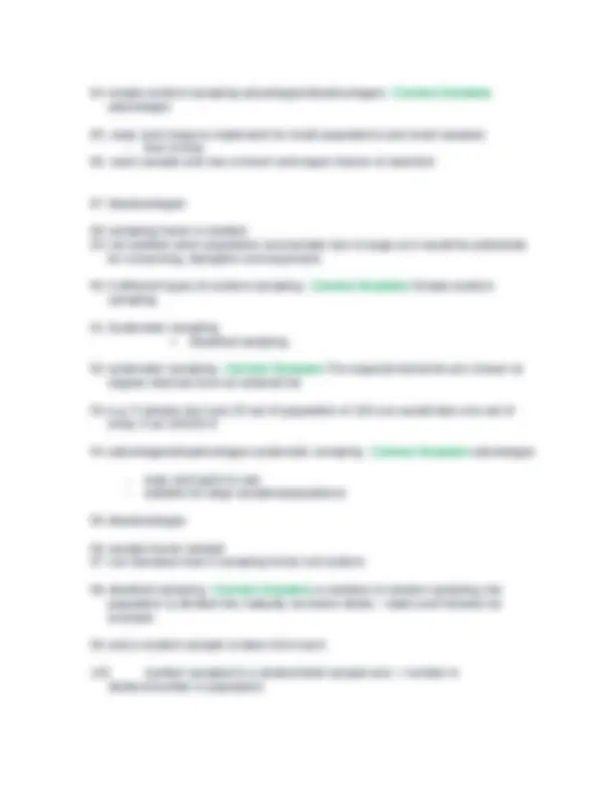
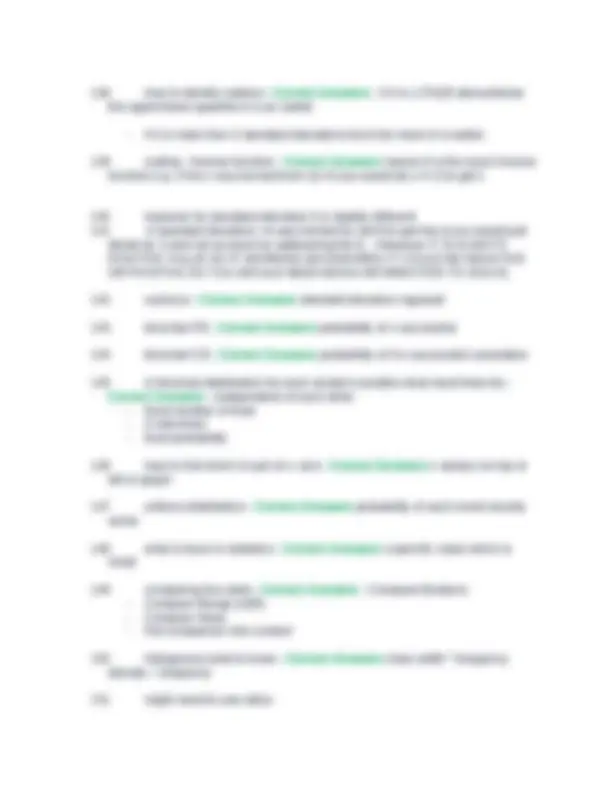
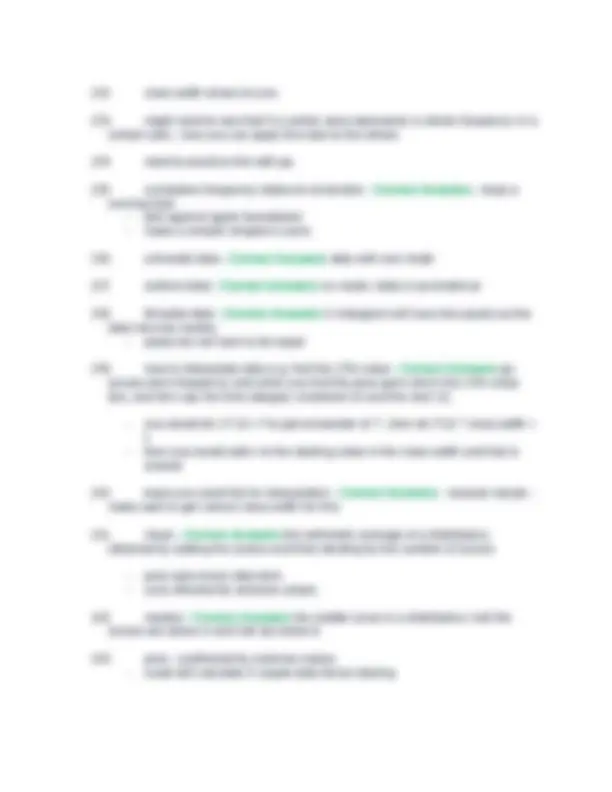
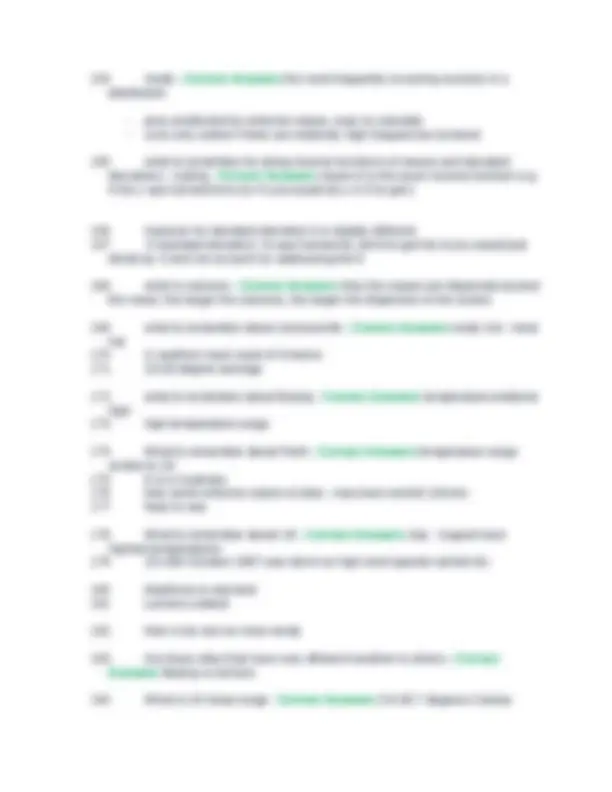
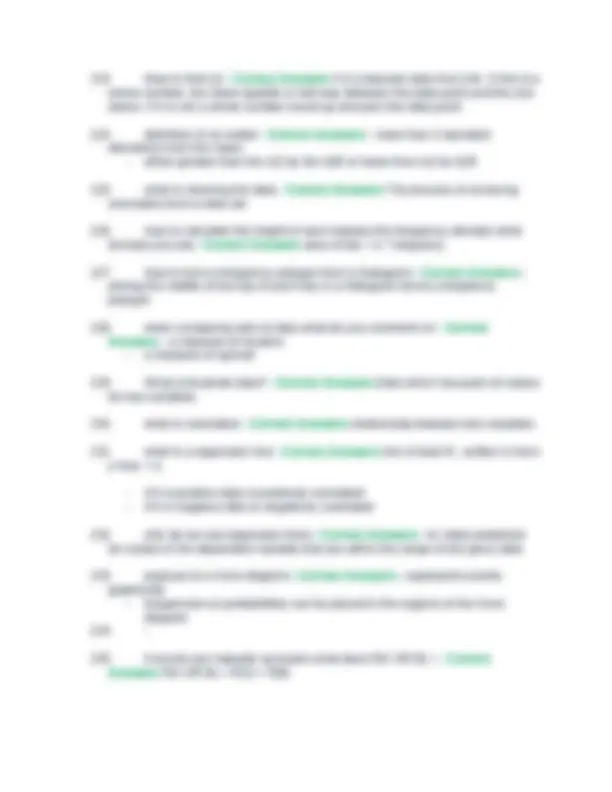
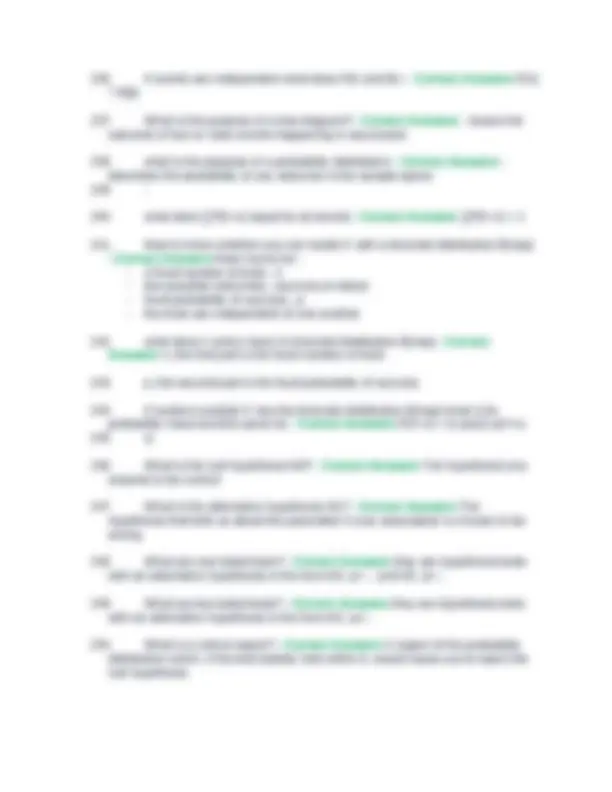
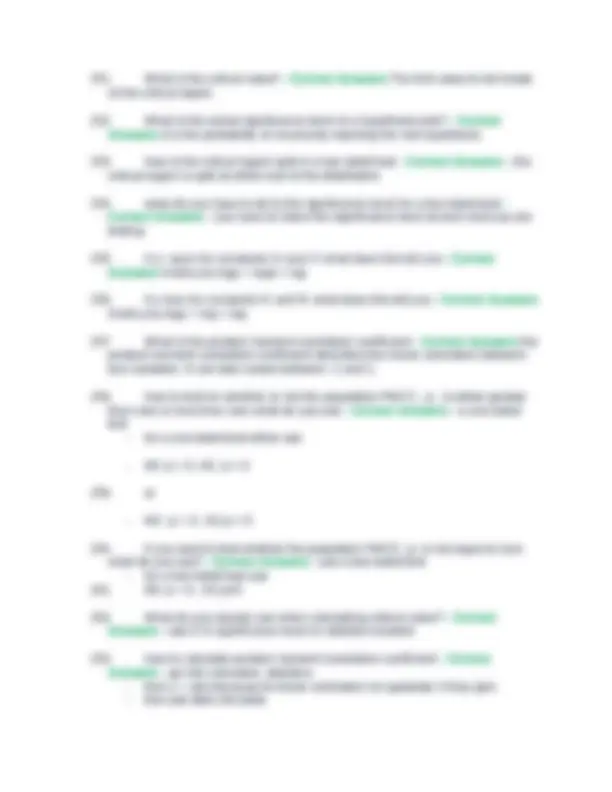
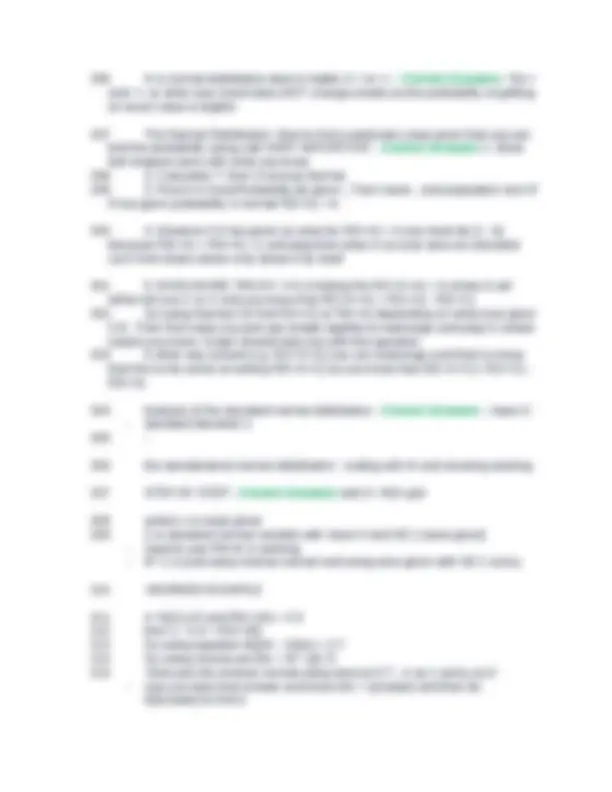
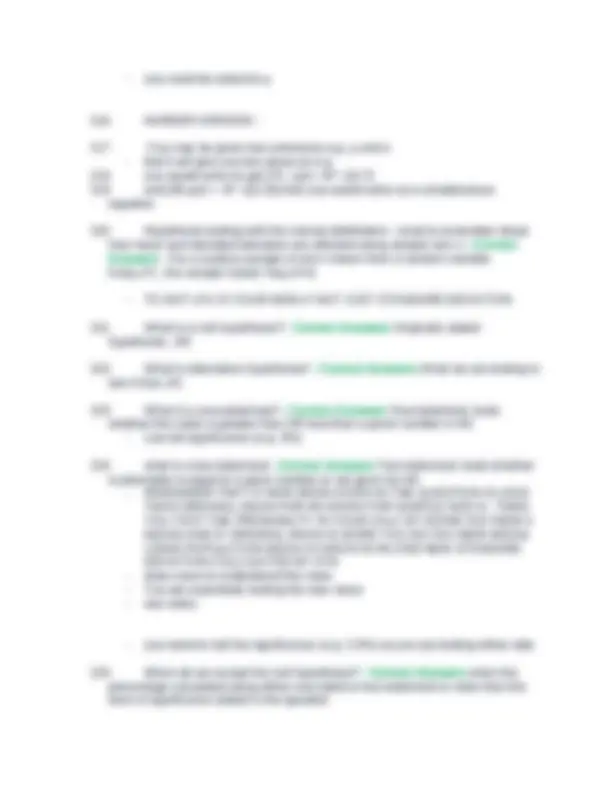
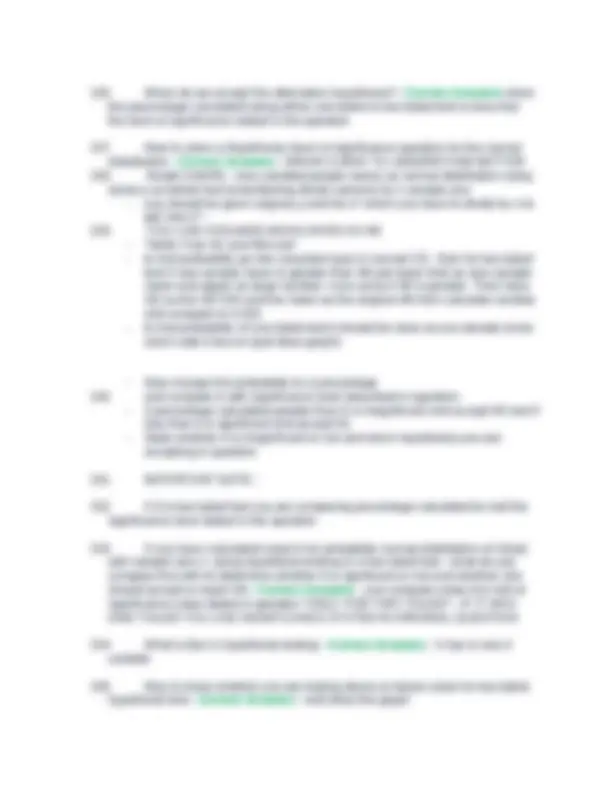
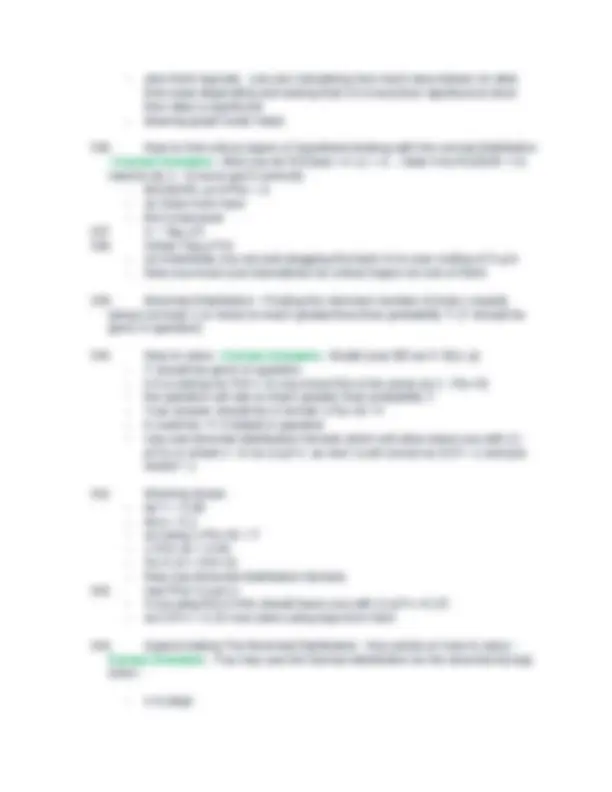
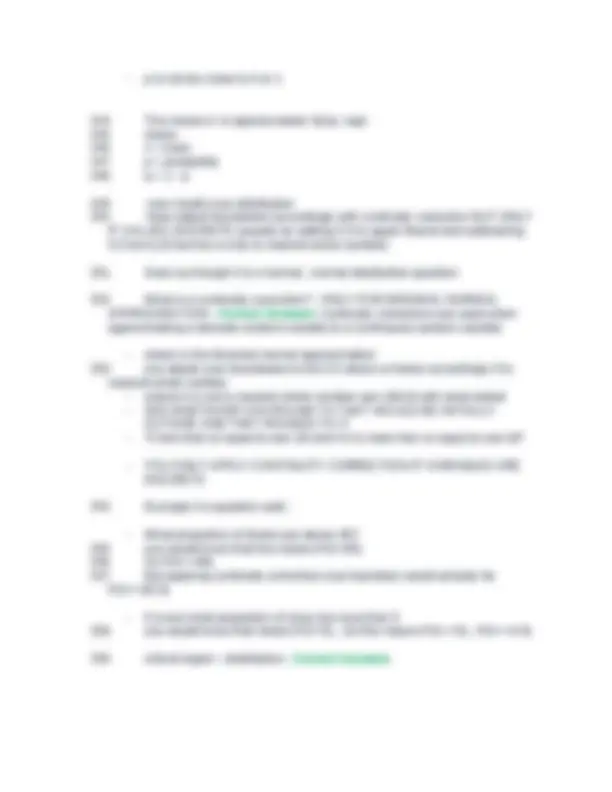
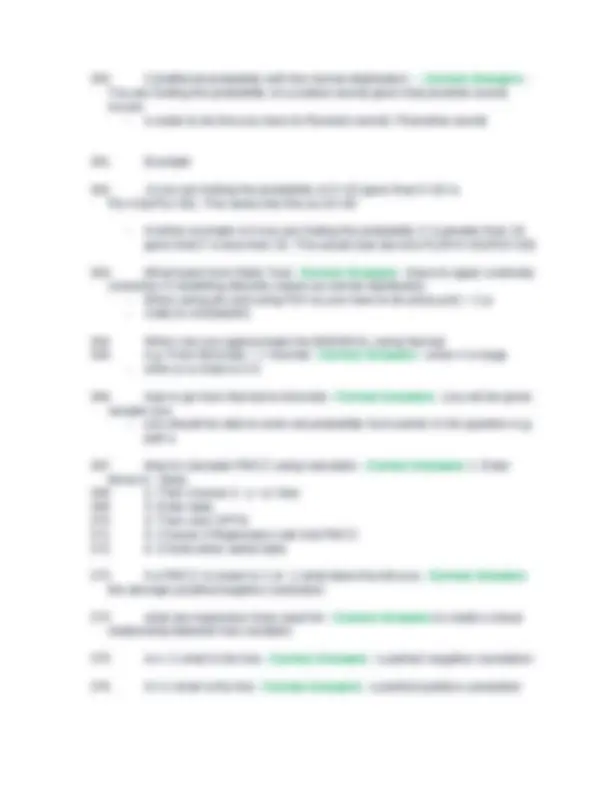
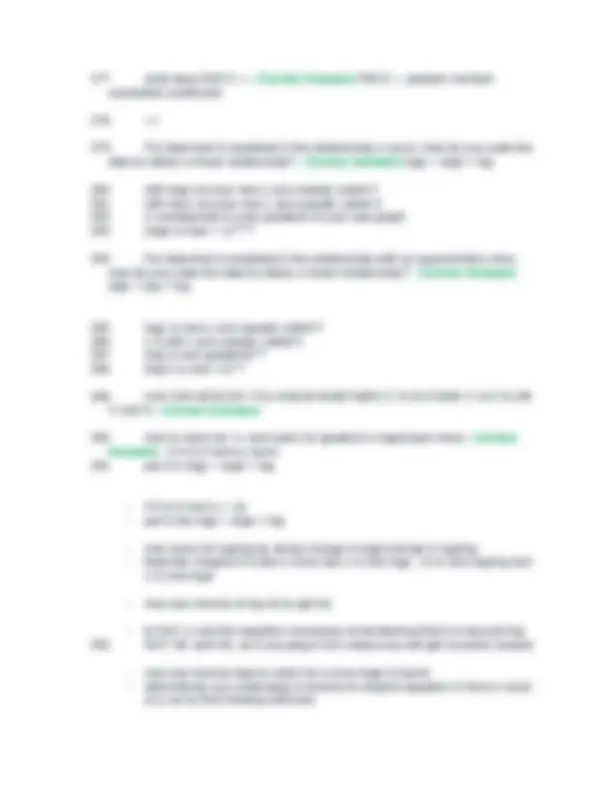
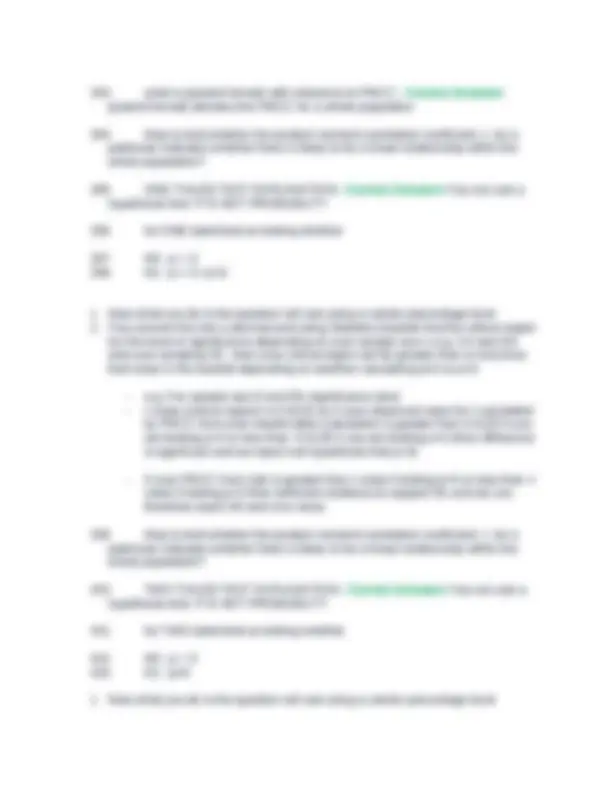
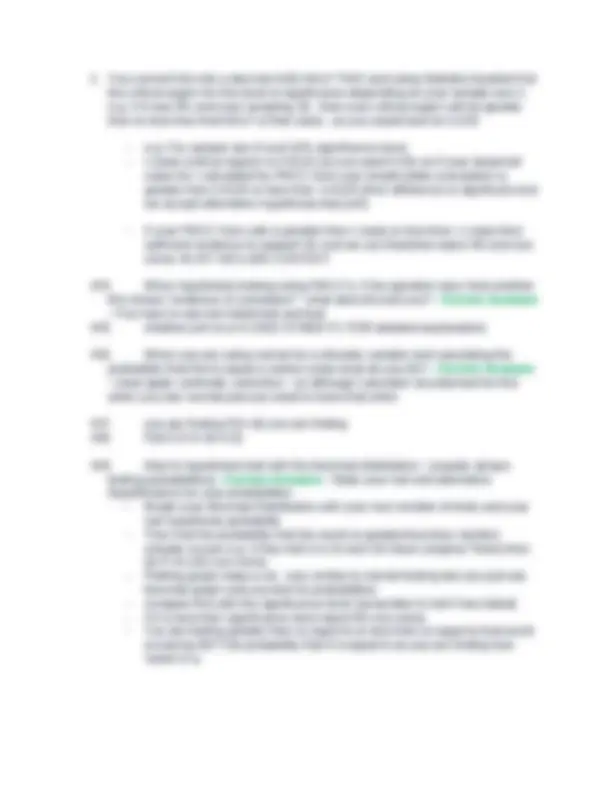
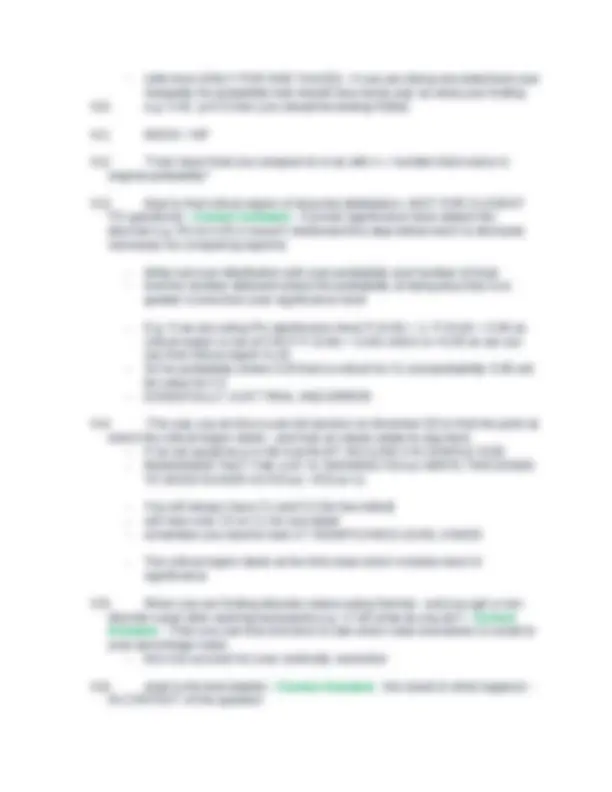



Study with the several resources on Docsity

Earn points by helping other students or get them with a premium plan


Prepare for your exams
Study with the several resources on Docsity

Earn points to download
Earn points by helping other students or get them with a premium plan
Community
Ask the community for help and clear up your study doubts
Discover the best universities in your country according to Docsity users
Free resources
Download our free guides on studying techniques, anxiety management strategies, and thesis advice from Docsity tutors
Excel a Level Math’s – Statistics questions and answers for 2024 candidates
Typology: Exams
1 / 28

This page cannot be seen from the preview
Don't miss anything!





















- Compare Range (IQR) - Compare Skew - Put comparison into context - each 1/9 chance - September for Perth * P[B] - *Write Your H1 and H0s out* - to find probability go into calculator type in normal CD , then for two tailed test if new sample mean is greater than H0 put lower limit as new sample mean and upper as large number / vice versa if H0 is greater. Then have SD as the SD^2/N and the mean as the original H0 then calculate number and compare to 0. - to find probability of one tailed test it should be clear as you already know which side it lies on (just draw graph) - Now change this probability to a percentage - if percentage calculated greater than it is insignificant and accept H0 and if less than it is significant and accept H - State whether it is insignificant or not and which hypothesis you are accepting in question